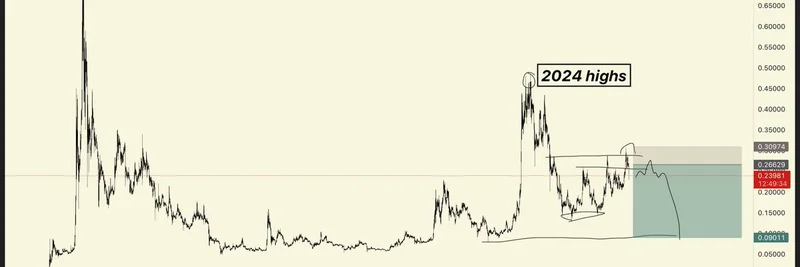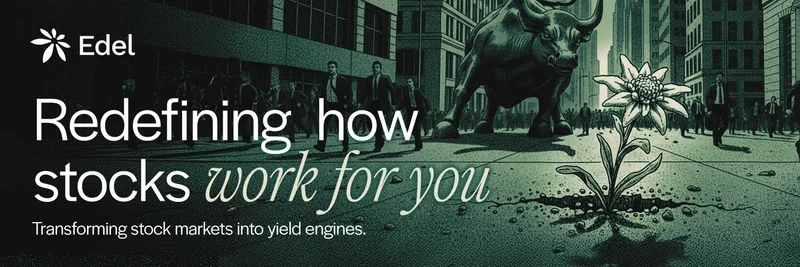In the ever-evolving world of crypto, where trends shift faster than you can say "to the moon," influential trader Ansem (@blknoiz06) dropped a thought-provoking thread on X that's got the community buzzing. Quoted by @aaalexhl, who didn't mince words calling "revenue meta" one of the dumbest buzzwords in Crypto Twitter (CT), the discussion dives deep into market cycles, speculation's decline, and why Dogecoin might just be the perfect analogy for what's happening now. If you're into meme tokens, this is essential reading – let's break it down.
Doge as the Cycle's Mirror
Ansem kicks things off by comparing the current crypto landscape to Dogecoin's wild ride. Back in 2021, amid COVID crashes and unprecedented stimulus, altcoins like Doge went parabolic, pumping to insane highs on pure hype. This cycle? Not so much. We're seeing lower highs across most alts, with liquidity flowing elsewhere – think stocks like NVDA and Palantir crushing it with 1600% and 3000% gains respectively.
Look at this chart Ansem shared: Doge's 2021 peak towers over its more subdued 2024 action. It's a stark reminder that the batshit insanity of last cycle isn't repeating. Instead, Ansem argues we've hit peak speculation-driven growth. Users are less willing to pay sky-high fees just to chase home runs, signaling a maturation in the market.
The 'Revenue Meta' Myth and Speculation's Fade
@aaalexhl echoes Ansem's sentiment, slamming "revenue meta" and "dark pools" as detached from reality. Ansem explains that the term "revenue meta" itself highlights how out-of-touch crypto markets have been – trading on dreams rather than dollars. But times are changing. Revenues in crypto stem from two main sources: speculative fee tolerance and blockchain's efficiency over traditional systems.
Solana, for instance, has nailed both, dominating with low costs and high activity. Yet, Ansem notes it's still undervalued compared to other assets. The hyper-rotation we're seeing – tokens pumping and dumping in hours – reflects speculation dying out. No one's holding worthless tokens without real metrics anymore. As @aaalexhl puts it, "no one is holding a token that has zero business value and not backed by any tangible metrics for longer than an hour."
Shifting to Real Business Value
Ansem's bullish on blockchain's future, but picky about winners. He believes success will come from apps with product-market fit (PMF), not blanket token pumps. Teams like @inversion_cap are pragmatic, enhancing existing businesses with blockchain rather than starting from scratch.
He contrasts this with stocks: Palantir's chart shows explosive growth, now at a $400B market cap.
Why? Better risk profiles, liquidity, and returns than many cryptos. Ansem isn't buying doomer theses like USD collapse driving funds into alts, or automatic crypto pumps from stock rallies. Instead, stablecoins will boost USD dominance, and investing in solid businesses – crypto or not – will yield big returns.
What About Rate Cuts and Economic Uncertainty?
Don't count on Fed rate cuts to reignite the bull, says Ansem. We've seen gains since late 2022 without them. Current inflation and economy favor gold and silver over crypto apes. Trillions in money market funds aren't flowing into "fartcoin" – they're heading to safer havens.
Ansem's outlook: lower prices in the next ~6 months, higher into 2026-2028. He'd flip bullish on Solana above $250 weekly close or Bitcoin over $120K. For now, strategy is cash-heavy with an "ape stack" for new launches like $PUMP, $IP, or $ASTER – outliers with momentum.
Replies highlight $ASTER's hype: CZ-backed, $1.5B TVL in days, showing even in a cooling spec era, strong projects can surge.
Implications for Meme Token Enthusiasts
For us at Meme Insider, this thread is a wake-up call. Meme coins like Doge thrived on speculation, but sustainability now demands more – community, utility, or at least tangible hype backed by metrics. The constant rotation means spotting outliers early is key. Ansem's squiggly lines (aka charts) guide his decisions, but his macro view reminds us: crypto's foundational, but pick wisely.
If this resonates, check out the original thread for the full scoop. What's your take – is speculation really dying, or just evolving? Drop your thoughts below!




